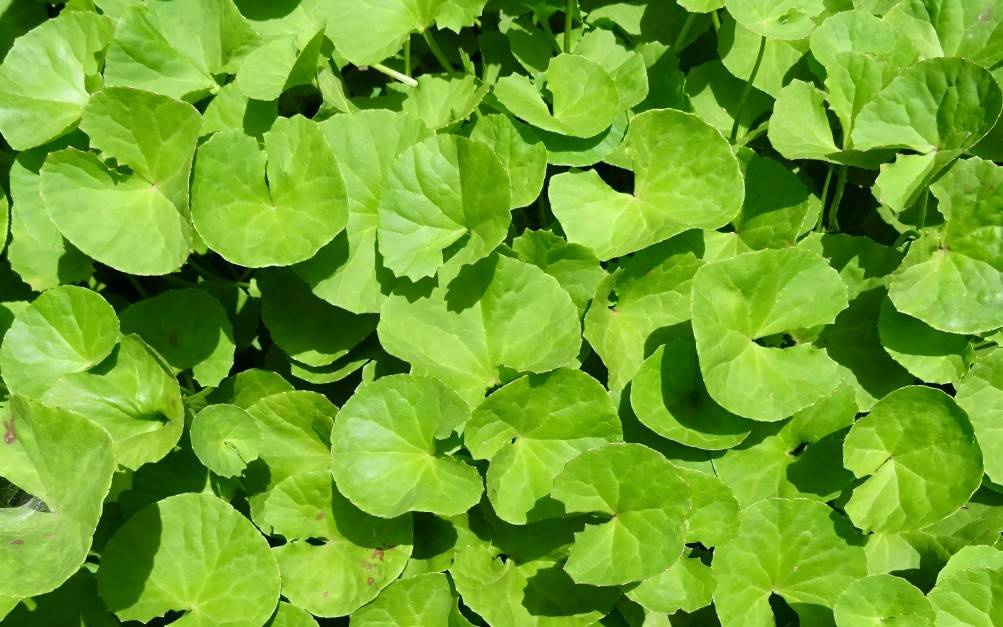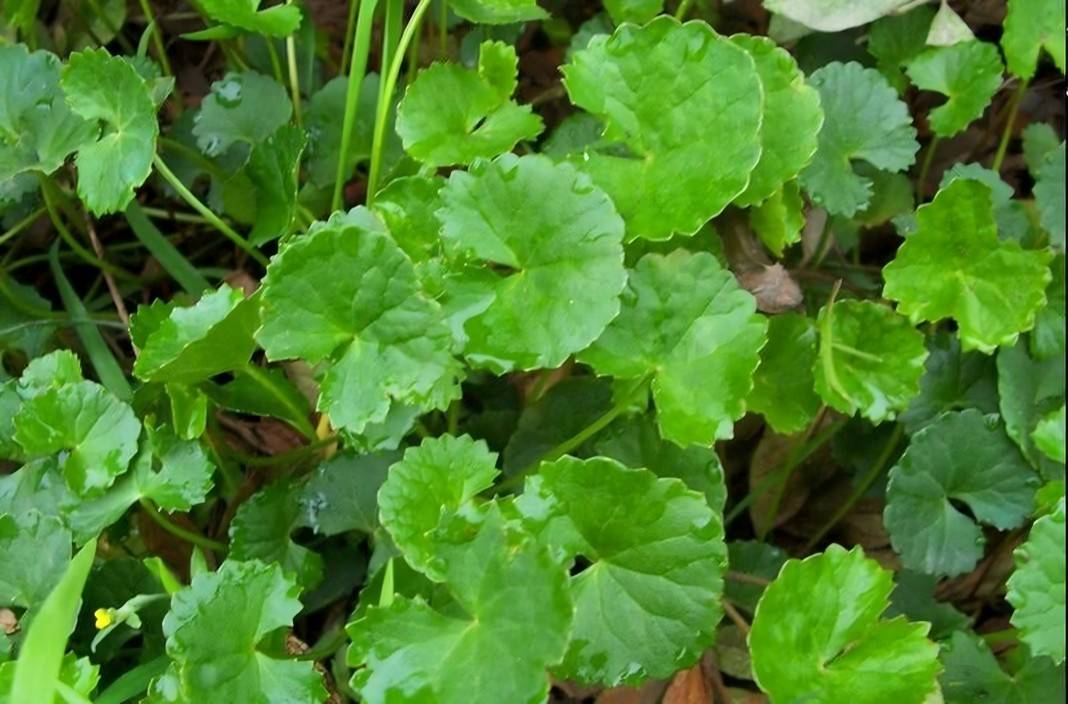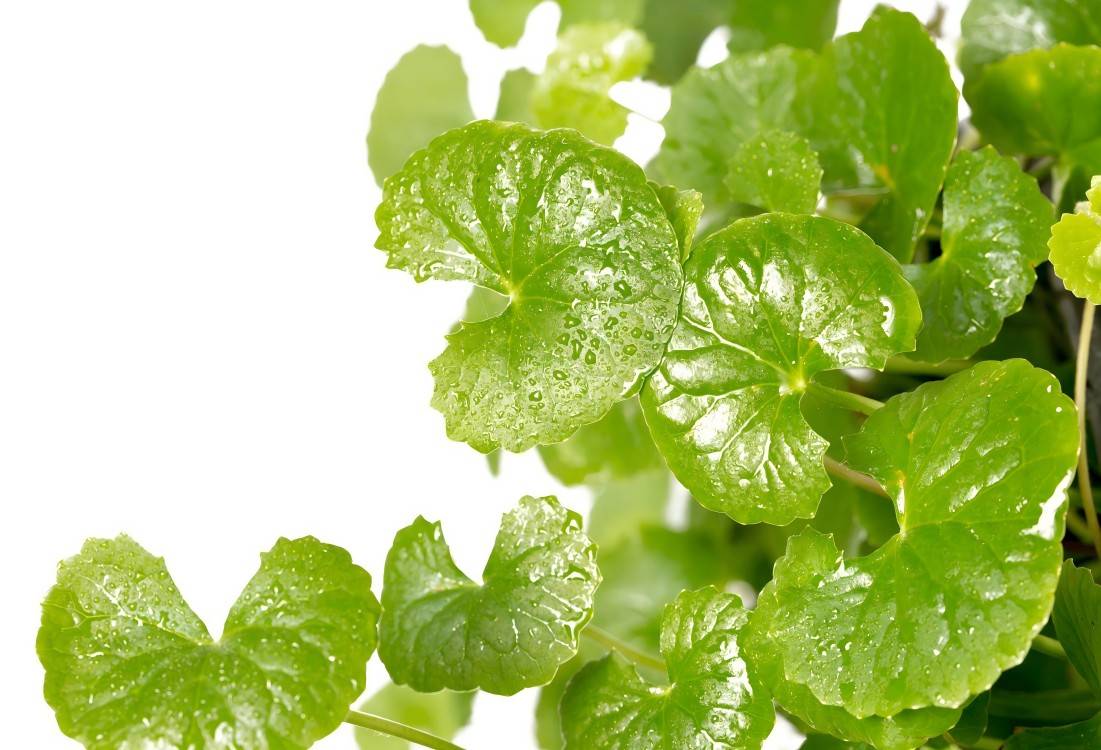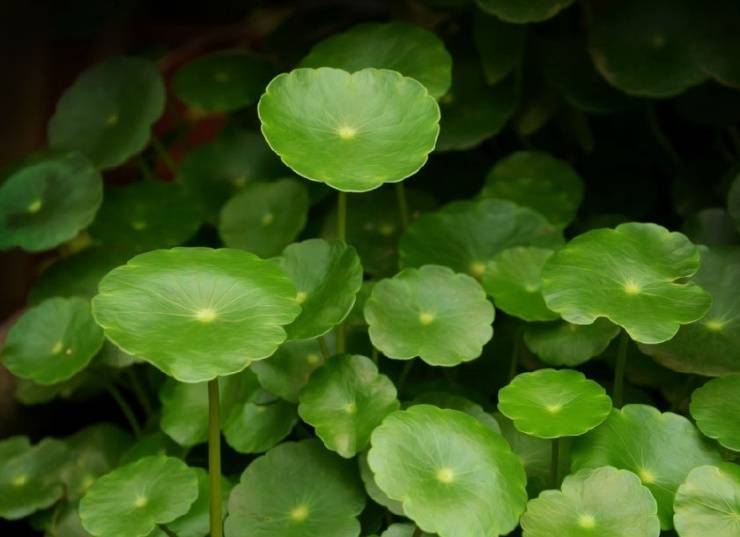Study on Gotu Kola Extract Asiaticoside for Wound Healing
Centella asiatica L, Urban is the dried whole grass of Centella asiatica of the genus Centella of the family Umbelliferae, which was first published in the Divine Husbandman's Classic of the Materia Medica, classified as a middle grade, also known as Lok Dak Ta, Bun Da Bowls, Horseshoe Grass, Big Leaf Money Grass and so on, is a creeping perennial herb with sweetness, pungency and coolness, and it has the efficacy of clearing away heat, inducing dampness, removing toxins, eliminating swellings, activating blood circulation, and stopping hemorrhage [1].
Gotu Kola has a wide distribution range, mainly concentrated in the northern and southern hemispheres and subtropical regions, mainly produced in South Africa, India, Malaysia, Australia, China and other regions. It is mainly found in South Africa, India, Malaysia, Australia, China and other regions. It is mainly distributed in South China, East China, Central and Southwest China. Asiaticoside (structural formula see Figure 1) is one of the main components of triterpenoid saponins in Centella asiatica extract, and modern pharmacological studies have confirmed that asiaticoside has the function of inhibiting scar formation, promoting trauma healing, anti-tumor, neuroprotection, anti-anxiety, immunomodulation, etc. Now, we present the results of the study of Centella asiatica extract. Now, the extraction process, pharmacological activity, content determination and pharmacological effects of centella asiatica glucoside are summarized.
1 Extraction process and content determination of centella asiatica glucoside
With the continuous application of new technologies and methods, decoction, reflux method, ultrasonic method, enzyme method, etc. appeared in the extraction of Centella asiatica glycosides, Han Wei et al. [2] used enzyme extraction of Centella asiatica glycosides, cellulase enzyme and the substrate of Centella asiatica mass ratio of m(E) ∶ m(S) = 1 ∶ 50, the material-liquid mass ratio of (Centella asiatica and the solvent of water) 1 ∶ 25, pH 6.0, the enzyme temperature was set to 40 ℃, the enzyme time 1 hour, and the enzyme temperature was set to 40 ℃, and the enzyme time was set to 1.0 ℃, and the enzyme temperature was set to 40 ℃. The enzyme digestion temperature was set at 40 ℃ and the enzyme digestion time was 1.5 h. The highest amount of asiaticoside was obtained, i.e. 29.6%.
The separation and purification methods of Asiaticoside include chromatography, solvent extraction, high performance liquid chromatography (HPLC) and high speed countercurrent chromatography (HSCCC). Preparative high performance liquid chromatography (HPLC) is a preparative liquid chromatography method that uses a high pressure, high flow rate liquid delivery system to separate samples with high purity on a high resolution, large internal diameter, high capacity separation column. The purity, recovery and separation efficiency of the product separated by this method are much better than that of the traditional preparative method. Gao Mingzhe et al. [3] used preparative HPLC to complete the separation within 20 min separation time, and prepared two fractions of centella asiatica glucoside and hydroxycentella asiatica glucoside, and the purity of the product reached more than 98% through the test.
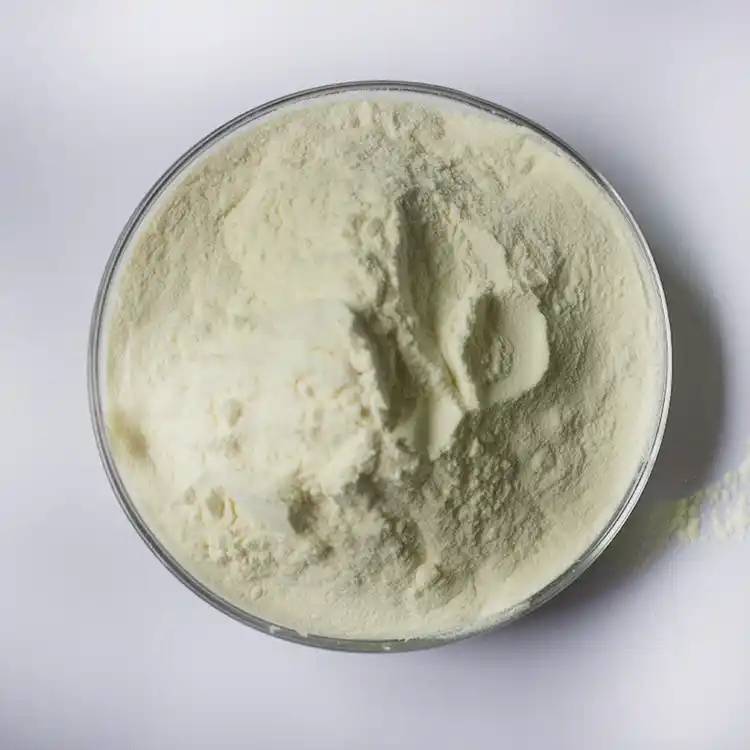
At present, for the determination of the drug content of centella asiatica glucoside, high performance liquid chromatography, titrimetric analysis, thin-layer scanning method and spectrophotometric method are available, among which high performance liquid chromatography is more suited for the quality control of herbs. Literature reports show that the separation of cumquat glucoside is best when using acetonitrile-water gradient elution and adjusting the ratio of acetonitrile to water to 29:7l [4].
Liang Liguang et al. [5] used HPLC to determine the asiaticosides in Centella asiatica of different origins and different times, and concluded that the content of asiaticosides in Centella asiatica harvested from June to October in Nanning, Guangxi was higher. It was concluded that the content of asiaticoside in Centella asiatica was mainly enriched in the leaves, and the content of total asiaticoside was as high as 6.12%, while that in the stems was 2.43%, and the content in the roots was lower, containing only 1.11%.
2 Pharmacological effects
2.1 Promote wound healing
Studies have confirmed that asiaticoside can promote fibroblast proliferation and extracellular matrix synthesis in the process of wound healing. Jeong-Hyun Lee et al. [6] found that when interfering with human fibroblasts with centella asiatica glucoside, centella asiatica glucoside was able to increase the adhesion and migration of human cells, and promote the proliferation of human fibroblasts, which could be applied to the healing of skin wounds. LU L et al. [7] used cDNA microarray technology to examine the gene expression profiles of human skin fibroblasts treated with asiaticoside (30 mg/ml) in vitro, and found that the genes responsible for cell proliferation and extracellular matrix synthesis were up-regulated at different time points. In addition, the mRNA and protein levels of collagen types I and III were also significantly increased under the effect of asiaticoside.
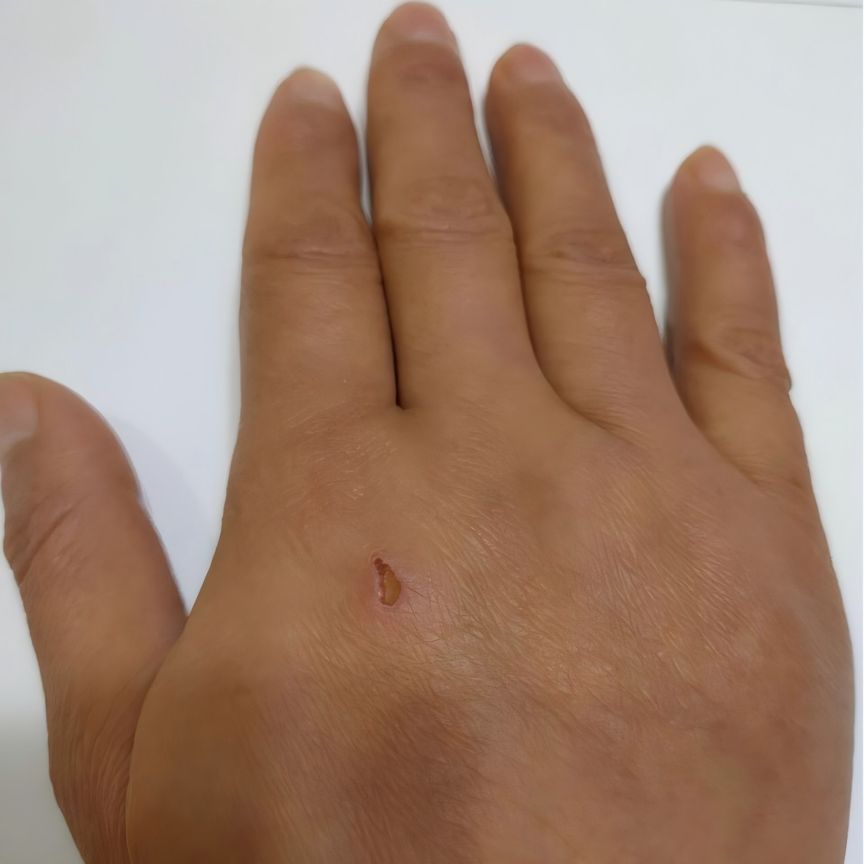
2.2 Inhibition of Skin Scar Formation
When studying the morphology and proliferation of fibroblasts cultured in vitro, it was found that asiaticoside could inhibit the proliferation of scar fibroblasts, and the proliferation of fibroblasts was significantly inhibited when the concentration of asiaticoside ranged from 0.1 mg/ml to 1.0 mg/ml. This suggests that asiaticoside reduces the synthesis of extracellular matrices, such as granulation tissues and collagen, and thus reduces the formation of scar by inhibiting the growth of fibroblasts. Meanwhile, at 1.0 mg/ml, asiaticoside could inhibit the mRNA expression of type I and type III collagen in scar fibroblasts, suggesting that asiaticoside reduces the synthesis of extracellular matrix and the formation of scar by decreasing the production of collagen. This experiment confirms that cumquat glucoside inhibits collagen production and scar formation by suppressing the collagen secretion of overactive fibroblasts[8] .
Pan Shu et al. [9] used flow cytometry analysis, RT-PCR and protein technology to study the effects of centella asiatica glycoside on the proliferation of scar fibroblasts and Smad pathway, and found that centella asiatica glycoside could inhibit scar proliferation, and its mechanism mainly increased the expression of Smad 7, an I-Smad transduction signal, and inhibited the pathological effects of TGF-β1, which caused fibroblasts to proliferate, and then inhibited the collagen secretion. Its mechanism mainly works by increasing the expression of I-Smad transduction signal Smad 7, inhibiting the pathological effect of TGF-β1 and blocking the proliferation of fibroblasts.
Lee et al. [10] found that centella asiatica glucoside could induce phosphorylation of Smad2 and Smad3. At the same time, they also found that cumquat chloride induced the binding of Smad3 and Smad4, and at the same time induced the nuclear translocation of the complex, suggesting that the action of cumquat chloride is related to the Smad signaling pathway. However, SB431542, an inhibitor of TGF-β receptor I kinase, failed to inhibit the phosphorylation of Smad2 and the synthesis of type I collagenase induced by cumquat chloride. Based on this, Lee concluded that the synthesis of type I collagenase induced by cumquat chloride was accomplished through the TGF-β kinase-independent Smad pathway.
Tang B et al [11] also confirmed that in scar tissue, centella asiatica glucoside was able to inhibit the expression of TGF - β1 receptor proteins and mRNAs and increase the expression of Smad7 proteins and mRNAs, while it had no effect on the phosphorylated Smad2 and Smad3 complexes, Smad2, Smad3, and Smad4. Based on this, he believed that the mechanism of collagen proliferation inhibition by cumquat glucoside is mainly through increasing the expression of Smad7, which in turn inhibits the pathological effect of TGF-β1 and blocks the proliferation of fibroblasts.Bylka et al. [12] believed that cumquat glucoside has the dual effect of promoting wound healing and inhibiting scar formation.
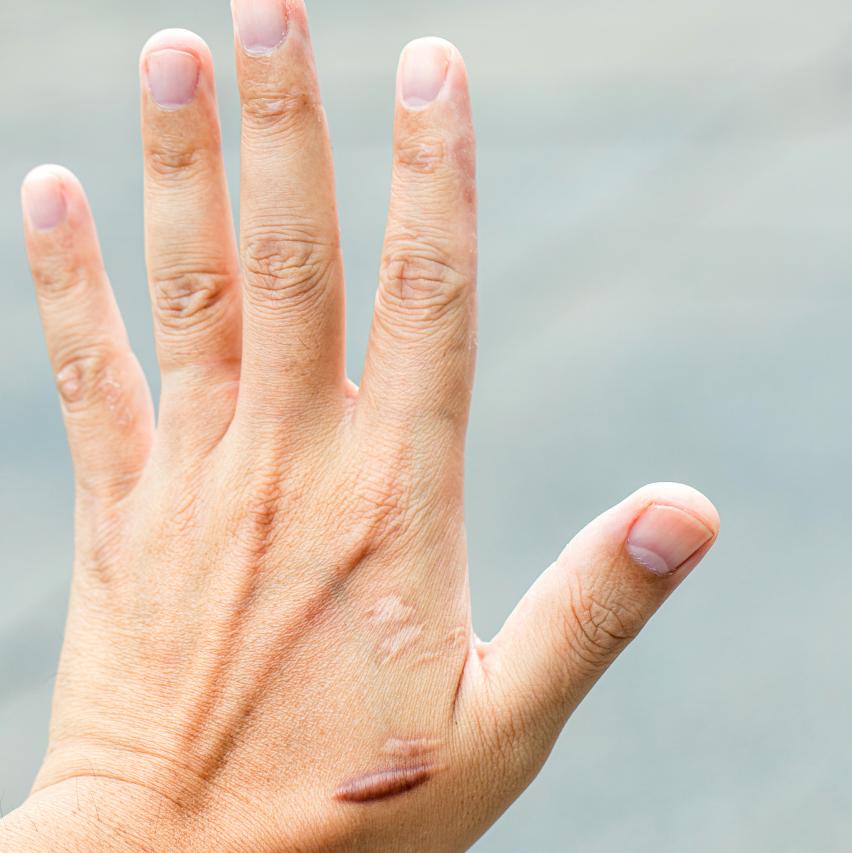
2.3 Anti-tumor effects
Modern pharmacological studies have confirmed the antitumor effect of centella asiatica glucoside. Its mechanism mainly involves inducing apoptosis of tumor cells, blocking DNA synthesis of tumor cells and inhibiting proliferation of tumor cells. In the antitumor study of cumquat glucoside, it was found that cumquat glucoside could induce apoptosis of oral epidermoid carcinoma cells, and it had a synergistic effect with vincristine. The synergistic mechanism was to increase the concentration of intracellular Ca+ and reduce the membrane potential of cells, thus increasing the sensitivity of cells to antitumor drugs, and at the same time, cumquat glucoside could increase the G2/M-phase block induced by vincristine. Flow cytometry, agarose gel swimming and morphology tests can confirm this [13], and Fatma J Al-Saeedi [14] also confirmed that centella asiatica glucoside can promote apoptosis of human breast cancer cells and enhance anti-tumor activity. Sun Shengmei et al [15] found that Centella asiatica had a significant inhibitory effect on cervical cancer Hela cells with concentration and time dependence when they investigated the effects of Centella asiatica glycosides on cervical cancer Hela cells. The mechanism was analyzed as the increase of Spase-3 expression and the decrease of Survivin protein induced by Asiaticoside, which is a member of the apoptosis inhibition family and can inhibit the expression of Spase-3, thus blocking the apoptosis process Bunpo et al [16] found that Centella asiatica glucoside inhibited DNA synthesis in tumor cells, and then inhibited methylene oxide-induced variant cystic foci, thus slowing down the proliferation of tumor cells and inhibiting carcinogenesis.
Ku Jung Kwon et al. [17] found that Gotu Kola was able to reduce melanogenesis in melanocytes, and further studies confirmed that centella asiatica glycosides were able to inhibit melanogenesis by reducing the expression of tyrosinase mRNA through the eyelet-associated transcription factor.
2.4 Anti-fibrotic effects
Asiaticoside has an antifibrotic effect. Wang Ce [18] used centella asiatica glucoside to intervene in the post-infarction model of rats, and found that centella asiatica glucoside could improve the expression of collagen in the non-infarcted area of myocardial tissues of infarcted rats, and alleviate the accumulation of extracellular matrix, thus exerting an antifibrotic effect on interstitial fibrosis of the myocardium. The mechanism is mainly realized by regulating the expression of extracellular matrix transforming growth factor TGF-β1. Asiaticoside can also increase the expression of synaptopodin, nephrin, and podocin genes and decrease the expression of desmin gene in adriamycin-induced nephrosclerosis in rats, thus reducing the expression of renal interstitial collagen and slowing down the development of renal interstitial fibrosis [19].
Yang Guang et al. [20] found that cumquat chloride was able to reduce hepatic fibrosis in the study of carbon tetrachloride-induced hepatic fibrosis, but the mechanism of the study was not involved.
HOU Shiqiang et al [21] studied the mechanism of stent restenosis intervention with cumquat chloride from in vitro and in vivo experimental design, and found that cumquat chloride can significantly reduce the synthesis and secretion of extracellular matrix by up-regulating the expression of Smad7 protein and suppressing the expression of TGF-β1, inhibit the proliferation of endomembrane after stenting, and alleviate the damage of endothelial cells, and it is an effective biochemical regulator of rapamycin. It is an effective biochemical regulator of rapamycin, which also proves that Asiaticoside has a very good effect on inhibiting fibrosis.
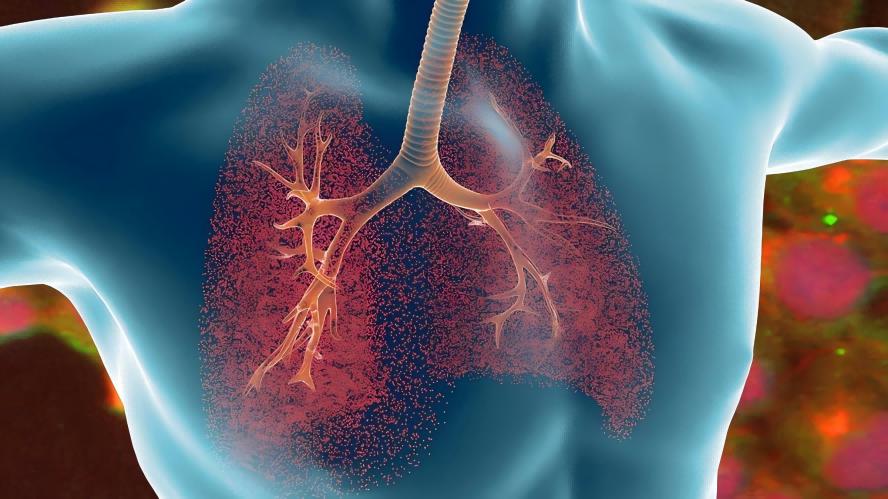
2.5 Effects on the nervous system
2.5.1 Neuroprotective effect
Jin Yan et al [22] used streptozotocin to make a diabetic peripheral neuralgia model, and gave high and low doses of asiaticoside after successful modeling. The results showed that asiaticoside could significantly inhibit the activation of microglia in the dorsal horn of the spinal cord, and down-regulate the release of spinal cord IL - β1 and TNF - α, which could effectively inhibit the thermal nociceptive hypersensitivity and tactile-evoked hyperalgesia induced by diabetic peripheral nerve injury.
Qi Fengyan et al. [23] used a primary culture model of N-methyl-D-aspartate injury in cerebral cortex neurons, and found that cumquat glucoside had a significant protective effect on N-methyl-D-aspartate-induced neuronal injury in a concentration-dependent manner. It was found that Centella asiatica had a significant protective effect on N-methyl-D-aspartate induced neuronal damage in a concentration-dependent manner. The mechanism is that asiaticoside can down-regulate the expression of glutamate N2B receptor, and then inhibit or partially inhibit the glutamate N2B receptor-mediated intracellular calcium overload, and reduce the expression of apoptosis-associated protein Bcl-2, so as to protect the cortical neurons from the excitotoxic damage induced by N-methyl-D-aspartic acid. D-aspartate, thereby protecting cortical neurons from N-methyl-D-aspartate-induced excitotoxicity.
Ma Shiping [24] used 1-methyl-4-phenyl-1,2,3,6-tetrahydropyridine (MPTP) in a rat model of Parkinson's disease and found that it could antagonize the MPTP-induced neurotoxicity. The treatment with centella asiatica glucoside can antagonize MPTP-induced neurotoxicity, protect dopaminergic neurons, and improve motor dysfunction. Another study showed that centella asiatica had a protective effect on colchicine-induced cognitive dysfunction and related oxidative damage[25] .
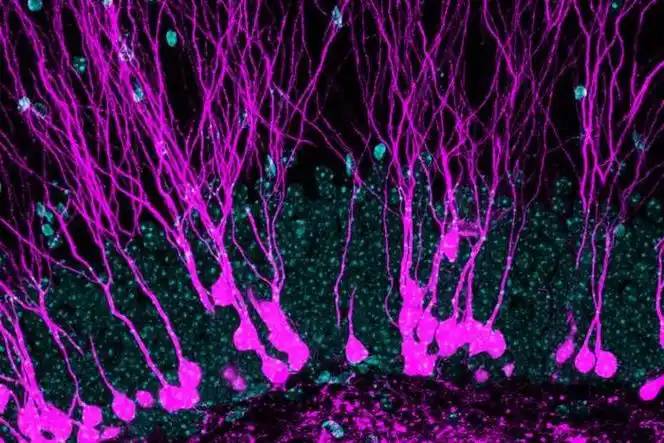
2.5.2 Anxiolytic and antidepressant effects
The efficacy of antidepressant drugs currently used in clinical practice is not satisfactory, and there are many adverse reactions. The pathogenesis of depression is not clear, and the main antidepressant drugs used in clinical practice are developed by targeting monoamine receptors such as norepinephrine, 5-hydroxytryptamine and dopamine. Chen Yao et al. [26] found that cumquat chloride plays an antidepressant role by increasing the body's resistance to various nonspecific stimuli and avoiding the dysfunction of the hypothalamic-pituitary-adrenocortical and hypothalamic-pituitary-thyroid axes caused by overstimulation of the body. The study of Liu et al [27] also confirmed that asiaticoside can be antidepressant, and asiaticoside can restore BDNF, PSD95, and synapsin I in the hippocampus of depressed rats to the level of normal rats, and the mechanism is that asiaticoside can play an antidepressant effect through the BDNF signaling pathway.
2.6 Anti-inflammation and lung protection
Jing Yuan Wan et al. [28] injected lipopolysaccharide into rats to create a fever and inflammation model, and then administered centella asiatica glucoside, and found that centella asiatica glucoside had the effects of antipyretic and anti-infective, and its mechanism of action was to inhibit the expression of pre-inflammatory factors, including tumor necrosis factor-α, interleukin-6, cyclooxygenase-2 and prostaglandin E2, and the expression of cyclooxygenase-2 and prostaglandin E2. The mechanism of action is to inhibit the expression of pre-inflammatory factors, including tumor necrosis factor-α, interleukin-6, cyclooxygenase-2, and prostaglandin E2, by regulating heme oxygenase-1. In this paper, researchers used ZnPPIX, an inhibitor of heme oxygenase-1, to intervene, and found that this blocker could block the antipyretic effect of cumquat chloride, and partially change the effect of cumquat chloride in inhibiting the levels of tumor necrosis factor-α and interleukin-6.
Zhang Zhuo et al [29] also demonstrated that centella asiatica glucoside could inhibit the expression of the inflammatory factors Tumor Necrosis Factor-α and Interleukin-6, and increase the expression of Interleukin-10 in an experimental study, and concluded that centella asiatica glucoside could maintain the dynamic balance between inflammation and play a protective role in lipopolysaccharide-induced lung inflammation.
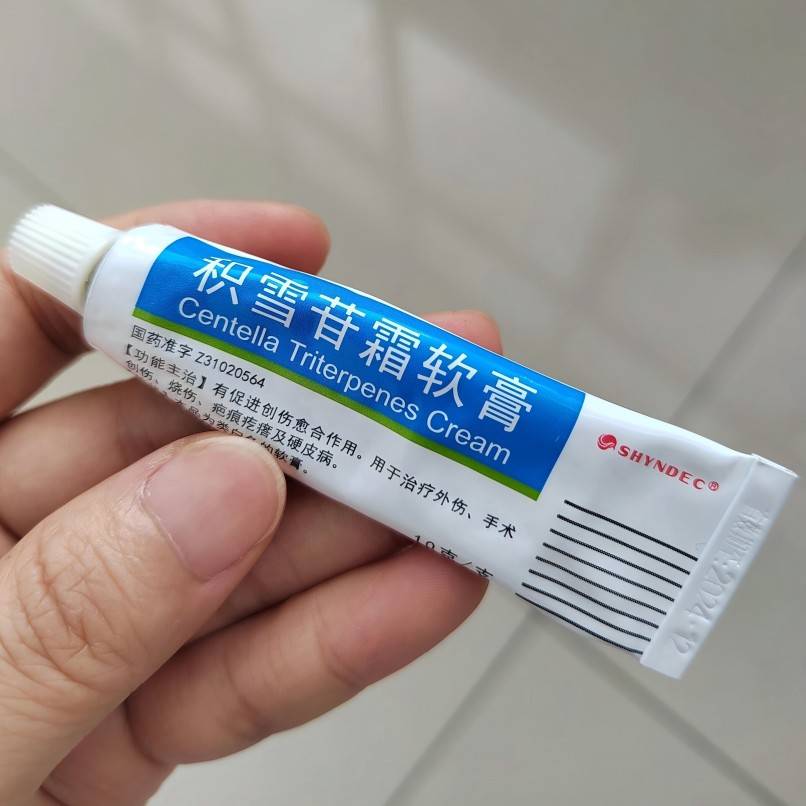
However, Jiaming Qiu et al. [30] suggested that the mechanism of lung protection by centella asiatica glucoside works through the NF-κB signaling pathway. In this study, it was found that asiaticoside dose-dependently reduced inflammation, pathological lung injury, cytokines and pulmonary edema. Asiaticoside significantly reduced the activation of NF-κBp65 and the expression of IκBα.
In addition, centella asiatica glycosides have hepatoprotective [31], dementia cognitive [32], anti-ulcer [33] effects.
Under the guidance of modern pharmacology, Centella asiatica and its constituents are gradually applied to the clinic to serve patients. With the wide application of cellular and molecular biology techniques in the study of drug mechanism, the mechanism of action of Centella asiatica and its components on diseases will become clearer and clearer, which will surely provide broad ideas for the development of Chinese medicine in China.
References:
[1] National Pharmacopoeia Commission. Chinese Pharmacopoeia [M]. Beijing: China Medical Science and Technology Press, 2010 :266 .
[2] Han Wei, Chen Huidan, Fan Liang, et al. Enzymatic Extraction of Centella asiatica Glycosides[J]. Journal of Nanjing University of Technology (Natural Science Edition), 2009, 31 (3) : 18 .
[3] Gao Mingzhe, Yuan Xiaoyan, Xiao Hongbin. Preparative high performance liquid chromatography for the separation and purification of asiaticoside and hydroxyasiaticoside from Centella asiatica extract[J]. Chromatography, 2008, 26 (3) : 362 .
[4] LU Xingyi, FENG Lijuan. Determination of hydroxycitrin and citrin in the total glycosides of Centella asiatica by HPLC[J]. Chinese Pharmacist, 2008, 11 ( 1) , 62 .
[5] Liang Li-Guang, Ma W. Determination of cumquatoside and hydroxycumquatoside in Centella asiatica of different origins and different time by HPLC[J]. West China Journal of Pharmacy, 2009, 24(2): 186 .
[6] Lee JH, Kim HL, Lee MH, et al. Asiaticoside enhances normal human skin cell migration, attachment and growthin vitro wound healing model [J]. Asiaticoside enhances normal human skin cell migration, attachment and growthin vitro wound healing model [J].
[7 ] Lu L, Ying K, Wei S, et al. Asiaticoside induction for cell-cycle pro- gression, proliferation and collagen synthesis in human dermal fibro- blasts[J]. Asiaticoside induction for cell-cycle pro- gression, proliferation and collagen synthesis in human dermal fibro- blasts[J]. Int J Dermatol, 2004, 43 ( 11) : 801 .
[8] Li Shanshan, Wang Weichen, Zeng Xianyu. Effects of asiaticoside on the expression of collagen Ⅰ and Ⅲ and TGF-β1mRNA in fibroblasts of scar tissue[J]. Chinese Journal of Leprosy and Skin Diseases, 2013, 29(5): 310.
[9] PAN Shu, LI Tianzeng, LI Yeyang, et al. Effects of asiaticoside on proliferation of proliferative scar fibroblasts and Smad signaling pathway[J]. Chinese Journal of Repair and Reconstructive Surgery, 2004, 18 (4) : 291 .
[10] Lee J, Jung E, Kim Y, et al. Asiaticoside induces human collagen I synthesis through TGFbeta receptor I kinase (TbetaRI kinase)-inde- pendent Smad signaling[J]. Asiaticoside induces human collagen I synthesis through TGFbeta receptor I kinase (TbetaRI kinase)-inde- pendent Smad signaling[J].
[11] Tang B, Zhu B, Liang Y, et al. Asiaticoside suppresses collagen expression and TGF - β/ Smad signaling through inducing Smad7 and inhibiting TGF - βRI and TGF-βRII in keloid fibroblasts[J].Arch Dermatol Res, 2011, 303 (8) : 563 .
[12] Bylka W, Znajdek -Awizeń P, Studzińska -Sroka E, et al. Centella asiatica in dermatology : an overview[J].Phytother Res Phytother Res, 2014, 28 (8) :1117 .
[13] Huang Yunhong, Zhang Shenghua, Zhen Ruixian, et al. Induction of apoptosis in tumor cells and enhancement of the antitumor effect of Vincristine by Centella asiatica glycosides[J]. Cancer, 2004, 23 (12): 1599.
[14] Al-Saeedi FJ. Study of the cytotoxicity of asiaticoside on rats and tumour cells[J]. BMC Cancer , 2014, 14 :220 .
[15] Sun Shengmei, Li Peiling, Guan Yadong, et al. Apoptosis of human cervical cancer Hela cells induced by asiaticoside and its mechanism[J]. J]. Heilongjiang Medical Science, 2007, 30(2):42.
[16] Bunpo P, Kataoka K, Arimochi H, et al. Effects of Centella asiatica on azoxymethane-induced aberrant crypt focus formation and carcinogen- esis in the intestinal cervix [J]. carcinogen- esis in the intestines of F344 rats[J]. Food Chem Toxicol. 2004, 42 ( 12) : 1987 .
[17] Kwon KJ, Bae S, Kim K, et al. Asiaticoside, a component of Centella asiatica, inhibits melanogenesis in B16F10 mouse melanoma[J]. Mol Med Rep. 2014. Mol Med Rep. 2014, 10( 1) : 503 .
[18] Wang C. Experimental study on the effect of centella asiatica glycosides on myocardial fibrosis in infarcted rats[J]. Chinese Journal of Biochemical Drugs, 2014, 34(8): 19.
[19] Wang Z, Liu J, Sun W. Effects of asiaticoside on levels of podocyte cy- toskeletal proteins and renal slit diaphragm protein sin adriamycin -in- duced rat nephropathy[J]. Life Sci, 2013 , 93 (8) : 352 .
[20] Yang Guang, Tan Jiaju, Chen Huajin, et al. Blocking effect of asiaticoside on carbon tetrachloride-induced hepatic fibrosis in rats[J]. Journal of Gastroenterology and Hepatology, 2009, 18 (5) : 397 .
[21] Hou Shqiang, Fang Ming, Chen Shasha, et al. Biochemical regulation mechanism of stent restenosis prevention by centella asiatica glycosides[J]. Chinese Journal of Traditional Chinese Medicine, 2014 , 39(8) : 1479 .
[22] Jin Yan, Gao Xiaojie. Effects of cumquatoside on diabetic peripheral neuralgia and its mechanism[J]. Pharmacology and Clinic of Traditional Chinese Medicine, 2013, 29(5): 39.
[23] Qi FY, Yang L, Tian Z, et al. Neuroprotective effects of Asiaticoside [J]. Neural Regen Res, 2014, 9( 13) : 1275 .
[24] Xu CL,Wang QZ, Sun LM, et al. Asiaticoside : attenuation of neurotoxicity induced by MPTP in a rat model of Parkinsonism via maintaining redox balance and up regulating the ratio of Bcl-2 / Bax [J].Pharmacol Biochem Behav, 2012, 100(3) : 413 .
[25] Kumar A, Dogra S, Prakash A. Neuroprotective Effects of Centella asi- atica against Intracerebroventricular Colchicine-Induced Cognitive Im- pairment and Oxidative Stress [J]. Int J Alzheimers Dis, 2009, 2009 : 1.
[26] Chen Yao, Qin Luping, Zheng Hanchen, et al. Effects of Asiaticoside on Neuroendocrine Functions in Depressed Rats[J]. Journal of Second Military Medical University, 2002, 23 ( 11): 1224.
[27] Luo L, Liu XL, Mu RH, et al. Hippocampal BDNF signaling restored with chronic asiaticoside treatment in depression -like mice[J]. Brain Res Bull, 2015, 114 :62 .
[28] Wan J , Gong X, Jiang R , et al. Antipyretic and anti -inflammatory effects of asiaticoside in lipopolysaccharidetreated rat through up regulation of heme oxygenase-1[J]. Phytother Res, 2013 , 27 ( 8 ) :1136 .
[29] Zhang Zhuo, Qin Dalian, Wan Jingmian, et al. Influence of centella asiatica glycosides on the balance of inflammatory factors in LPS-induced acute lung injury in mice[J]. Chinese Materia Medica, 2008, 31 (4) : 547 .
[30] Qiu J, Yu L, Zhang X, Wu Q, et al. Asiaticoside attenuates lipopo- lysaccharide-induced acute lung injury via down-regulation of NF-κB. regulation of NF - κB signaling pathway[J]. Int Immunopharmacol, 2015 , 26( 1) : 181 .
[31] Zhang L, Li HZ, Gong X, et al. Protective effects of Asiaticoside on acute liver injury induced by lipopolysaccharide / D - galactosamine in mice [J]. Phytomedicine, 2010, 17 ( 10) : 811 .
[32] Lin X, Huang R , Zhang S, et al. Beneficial effects of asiaticoside on cognitive deficits in senescence - accelerated mice[J]. Fitoterapia, 2013 , 87 :69 .
[33] Cheng CL, Guo JS, Luk J, et al. The healing effects of Centella extract and asiaticoside on acetic acid induced gastric ulcers in rats [J]. 2004 , 74( 18) : 2237 .


 English
English French
French Spanish
Spanish Russian
Russian Korean
Korean Japanese
Japanese